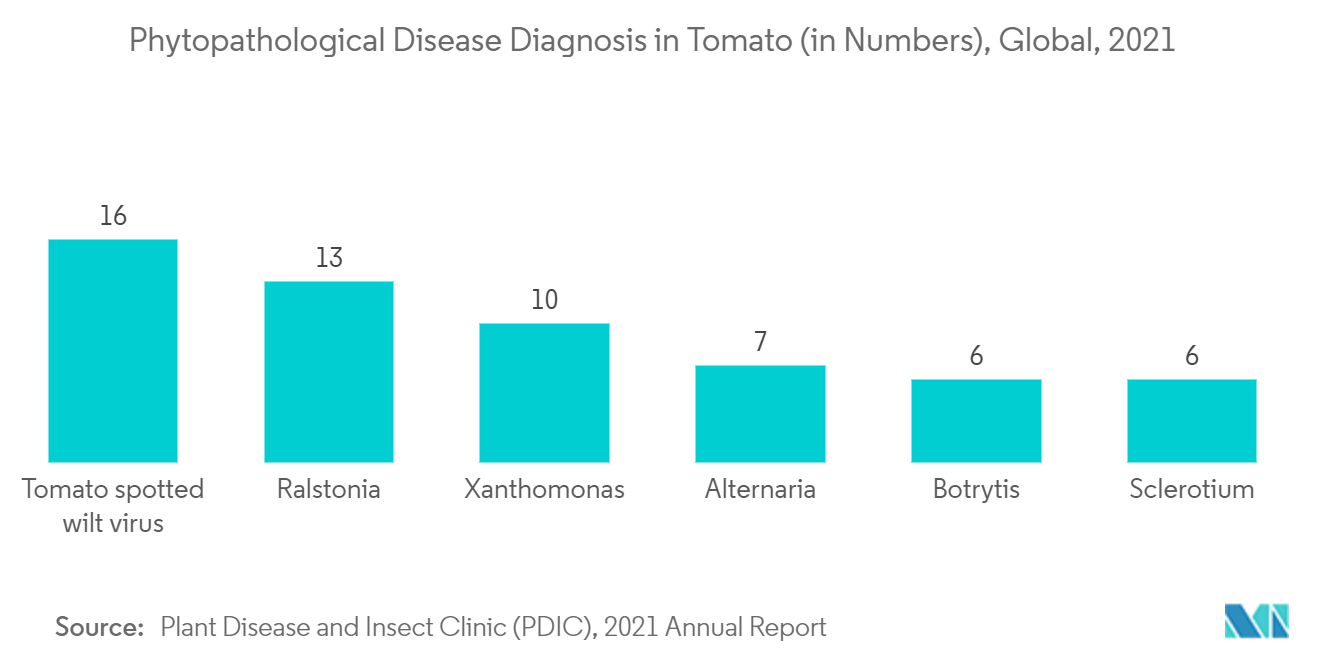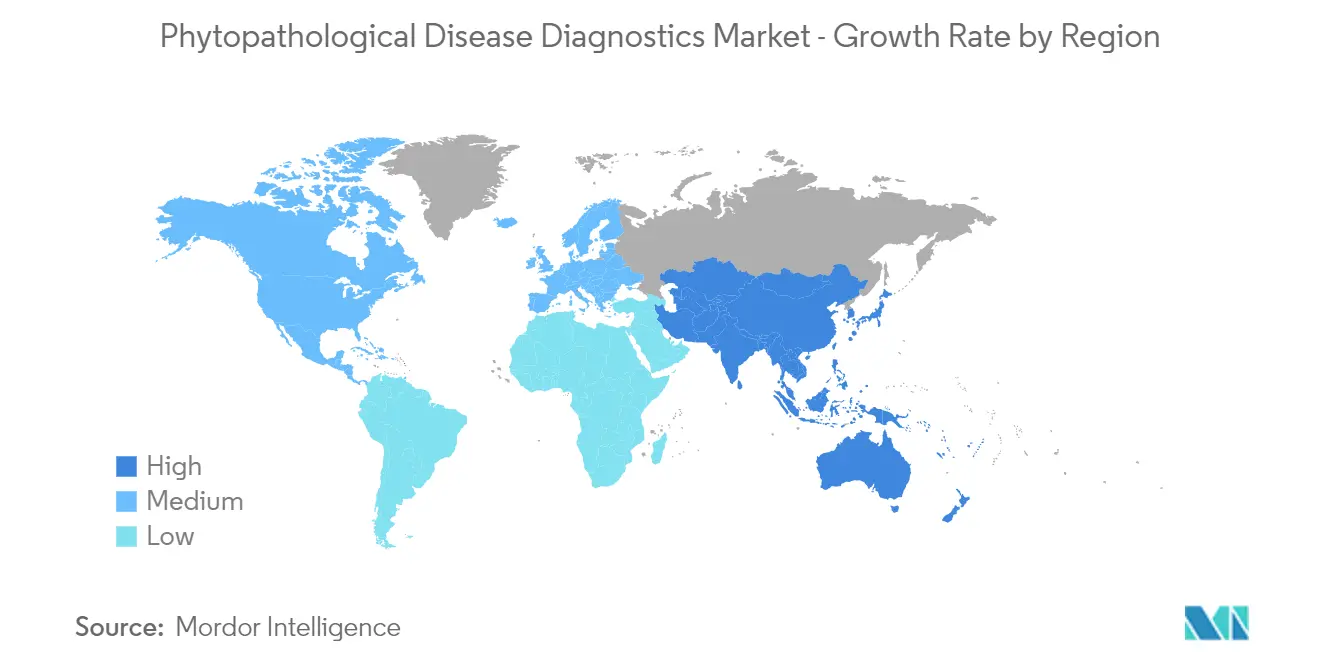Market Trends of Global Phytopathological Disease Diagnostics Industry
This section covers the major market trends shaping the Phytopathological Disease Diagnostics Market according to our research experts:
PCR-based Assays Holds Significant Share in the Global Phytopathological Disease Diagnostics Market Over the Forecast Period
The polymerase chain reaction (PCR) based assay segment is expected to witness significant growth in the phytopathological disease diagnostics market over the forecast period owing to the factors such as the rising prevalence of plant diseases, growing adoption of PCR-based assay methods for detecting various plant disease and increasing technological advancements.
As per an article published in May 2021, titled 'Detection of Diverse Maize Chlorotic Mottle Virus Isolates in Maize Seed', the viral detection thresholds for each diagnostic assay (ELISA, RT-PCR, and RT-qPCR) were established using purified virions of maize chlorotic mottle virus (MCMV) isolates from Kansas, Mexico, and Kenya. It has been observed that the RT-PCR and SYBR Green-based RT-qPCR assays were >3,000 times more sensitive than commercial ELISA for maize chlorotic mottle virus (MCMV) detection. Thus, the high sensitivity in detecting plant disease in maize is expected to increase the adoption of PCR-based assays, which in turn is anticipated to propel market growth.
Additionally, according to an article published in February 2020, titled 'Comprehensive Real-Time RT-PCR Assays for the Detection of Fifteen Viruses Infecting Prunus spp.', it has been observed that the latest developments in real-time RT-PCR have substantially enhanced the detection of infections, providing speedy, sensitive, and accurate identification as compared to end-point RT-PCR. Also, real-time RT-PCR techniques can be multiplexed with other assays to improve testing efficiencies by detecting numerous viruses in the same reaction or by including internal control. Thus, the development of highly sensitive real-time RT-PCR assays with broad-range detection capacity is expected to simplify the detection of various plant diseases that may be infected by genetically diverse viruses which are expected to increase the market growth over the forecast period.
Thus, owing to the aforementioned factors, the market is expected to grow significantly during the forecast period.

North America Dominates the Market and Expects to do Same Over the Forecast Period
North America is anticipated to witness significant growth in the phytopathological disease diagnostics market over the forecast period owing to the factors such as the increasing incidence of plant diseases, the presence of well-established diagnostic infrastructure, growing adoption of novel assay technologies.
In addition, the rising government support and funding to protect crops and plants in the region is also contributing to the growth of the market. For instance, in July 2022, the United States Department of Agriculture (USDA) additionally invested USD 14 million to assist agricultural worker training in historically underprivileged communities and boost the sector's resilience.
Furthermore, in February 2022, the United States Department of Agriculture (USDA) allocated more than USD 70 million to support 372 projects under the Plant Protection Act's Section 7721 program to strengthen the nation's infrastructure for pest detection and surveillance, identification, and threat mitigation, to safeguard the nursery production system and to respond to plant pest emergencies. In addition, 28 projects out of the 372 funded in the fiscal year 2022 are funded by the National Clean Plant Network. Also, from the same source, The National Clean Plant Network (NCPN) aids in keeping up the infrastructure required to guarantee that planting materials that have been certified as being pathogen, disease, and pest-free are accessible to American specialty crop producers of fruit trees, grapes, berries, hops, sweet potatoes, and roses.
Moreover, the rising research and development activities and increased product launches in the region are expected to propel market growth over the forecast period. For instance, in July 2021, researchers from North Carolina State University developed a patch, a wearable sensor, that can continuously monitor plant diseases or other stresses, such as crop damage or extreme heat by measuring the volatile organic compounds (VOCs) emitted by plants. Also, in January 2021, Agdia, Inc. launched an ELISA reagent set for the detection of the tomato brown rugose fruit virus (ToBRFV).
Thus, owing to the aforementioned factors, the market is expected to grow significantly during the forecast period.


